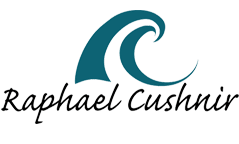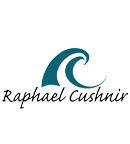20 Jul The Truth About Anxiety
Have you ever heard of “exposure therapy”? It’s state of the art for phobias. Say you’re afraid to fly. A skilled exposure therapist would walk you gently through a number of dry runs in the office, attending to all your worries and fears. Then you’d try it for real, taking it one moment at a time, perhaps with the therapist right there in the seat next to you.
It wouldn’t be easy at first, but following that virgin flight the next ones would be easier. After awhile your primitive brain would successfully update, such that future plane flights would cause no panic at all, and instead would become mostly routine.
The work of Emotional Connection, in essence, is inner exposure therapy. After gentle, repeated run-throughs in which we bring compassionate presence to previously unbearable emotional states, we no longer respond to those emotions like they’re threatening our very survival. [pullquote]The work of Emotional Connection, in essence, is inner exposure therapy. After gentle, repeated run-throughs in which we bring compassionate presence to previously unbearable emotional states, we no longer respond to those emotions like they’re threatening our very survival.[/pullquote]
So how does Emotional Connection apply to anxiety?
Truth is, anxiety is not an emotion. It’s a particularly visceral form of emotional resistance. Even though anxiety itself can seem intolerable, our primitive brains deem it less threatening than the core emotion that triggers it in the first place.
Once we’re in the grip of anxiety, there’s no chance we’ll have to experience that core emotion directly. From the point of view of the primitive brain, mission accomplished.
From the point of view of any anxiety sufferer, of course, there’s got to be a better way. And there is, presented here by way of a recent client breakthrough.
My client – we’ll call him Gary – suffered debilitating panic attacks. Panic attacks are anxiety to the nth degree. Nothing, not even medication, was keeping Gary’s panic at bay, as several emergency room visits and repeated in-patient psychiatric stays attested.
I had the good fortune to be with Gary as a panic attack came on. I guided him to experience it directly, in his body, one moment at a time. My counter-intuitive instruction was to turn into the anxiety, rather than away from it. To “surf it,” no matter how terrifying the waves. This was inner exposure therapy, round one.
After about two minutes, the anxiety cleared, leaving Gary face to face with even greater waves of anger, grief and shame. Here, too, I supported Gary in more surfing. Inner exposure therapy, round two.
There was lots of shaking, and tears, and diversions into thought. But after about five minutes, Gary experienced a relative calm. And a sense that his world was now different.
Why? Because he knew, from his own direct experience, that there was something he himself could do when gripped by anxiety. Something that worked. With no side effects.
Plus, he saw with convincing clarity that the anxiety had been blocking his core emotions. He saw that once he was able to experience those emotions directly, the anxiety was no longer present or necessary.
In working with hundreds of clients with similar challenges, I feel confident most people can clear their own anxiety the same way Gary did. In doing so, their brains get rewired so that future bouts of anxiety are less intense and more easily surfed.
It’s not easy, of course, but it is simple. If you suffer from anxiety, and are willing to embark upon “the wave less traveled,” a renewed life awaits you on shore.
If you have questions or comments about this approach, or would like to schedule a session to experience it first-hand, please email me at rc@cushnir.com.



Wendy Barry-Owen
Posted at 19:54h, 21 MayI’m interested in learning more about your approach to anxiety. I live in Oakland CA, are you, or workshops, nearby?